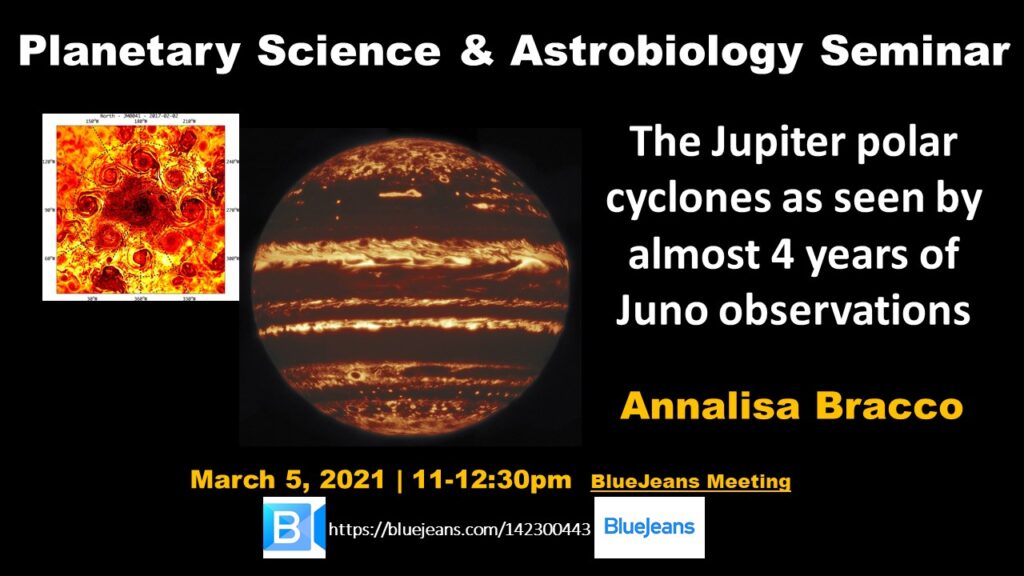
The NASA spacecraft Juno discovered the circumpolar cyclone structures on Jupiter in 2017, and it has been monitoring their evolution ever since. These cyclones are organized in structures shaped like regular polygons. I will discuss the evolution of these structures as seen by Juno from February 2017 to November 2020 focusing on the data provided by the JIRAM instrument (Jovian InfraRed auroral mapper). Through these observations we have been able to monitor the properties, position and evolution of cyclonic and anticyclonic structures at latitudes above 80° both in the North and South poles of Jupiter.
Fundamental questions concerning Jovian cyclogenesis concern the formation mechanism and whether these cyclones are deep or shallow structures. JIRAM’s measurements show that any change in a structure is an extremely unlikely event on an annual scale, which has only happened once, and only temporarily in 2019. Neither the merging of two cyclones, nor the disappearing/creation of one stable cyclone has ever been observed.
Finally, I will discuss recent numerical studies relevant to both Jupiter and Saturn and how their results ‘fit’ JIRAM observations and possible steps forward to solve the deep – shallow conundrum.
Annalisa Bracco,
Professor School of Earth and Atmospheric Sciences, Georgia Institute of Technology
